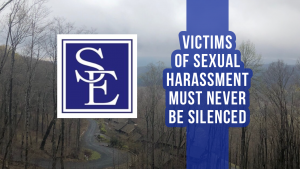A newly released study by the Association of American Universities (AAU) has shown an increase in incidents of sexual assault and misconduct on college campuses in the United States since they last published a similar report in 2015. Using data gathered for the current study came from twenty-seven universities during the 2018 school year and 2019 spring semester; comprised of over 180,000 respondents from both public and private institutions, in both undergraduate and graduate programs. The study is yet another indicator that despite the increased public attention of the #MeToo movement, women continue to be confronted with issues of sexual harassment and sexual assault at an alarming rate.
 The findings of the report categorize the respondents as male, female, transgendered, or non-identified gendered, as well as whether they were graduate or undergraduate students at the time. The findings of the report show that compared to the original 2015 report there is an increased awareness across the board on what is considered to be sexual assault and misconduct amongst all students. While this is encouraging, this finding coincides with a notable increase in sexual misconduct experienced by students even as campuses nationwide have implemented more comprehensive plans to address the problem.
The findings of the report categorize the respondents as male, female, transgendered, or non-identified gendered, as well as whether they were graduate or undergraduate students at the time. The findings of the report show that compared to the original 2015 report there is an increased awareness across the board on what is considered to be sexual assault and misconduct amongst all students. While this is encouraging, this finding coincides with a notable increase in sexual misconduct experienced by students even as campuses nationwide have implemented more comprehensive plans to address the problem.
According to the study undergraduate women are almost three times more likely than graduate women to encountered nonconsensual sexual contact (25.9% to 9.7%). The same holds true for undergraduate men (6.8%) when compared to graduate men (2.5%). While transgendered or non-identified gendered students also found that undergraduate students (22.8%) were subjected to more nonconsensual sexual contact than graduate students (14.5%). The study has shown that older students were less likely to experience nonconsensual sexual misconduct than their younger colleagues. This is true in the comparison of undergraduate and graduate students, but also when comparing younger undergraduates to their older counterparts. First year undergraduates were found more likely to report nonconsensual sexual contact than any other year as an undergraduate, with the rate decreasing steadily with each additional year of undergraduate study.
The overall percentage of students who reported being the victim of sexual assault or sexual misconduct was aggregated to be 13%. When comparing the responses from the twenty-one universities who participated in the 2015 survey as well as the most current survey, the study found an increase in some categories. Undergraduate women suffered an increase of 3% while graduate women suffered an increase of 2.4%. Undergraduate men meanwhile suffered an increase of 1.6%, while all other groups saw no significant change.
While the overall rates have increased, there is some positive takeaways from the study. Increasingly graduate and undergraduate students have had either an “extreme” or “very” high understanding of their universities’ definition of sexual misconduct, with each category increasing by nearly 10%. However this higher rate of knowledge is tempered by the attitude that students have towards the authorities’ seriousness towards their reports, and their own feelings on whether or not they should report based upon their own perception of the incidents’ seriousness. While 65.6% of the overall student body felt that their complaints would be taken seriously by the proper authorities, such as local police and campus resources, actual victims have a more skeptical outlook with only 45% of them reporting that these resources would take their complaints seriously.
Sexual misconduct and sexual assault has been a problem plaguing higher learning institutions for years. Under the New Jersey Law Against Discrimination, employers and universities must maintain policies against sexual harassment and assault. A student who falls victim of sexual assault at college could maintain a claim under the New Jersey Law Against Discrimination against the school if they can show it being vicariously liable or negligent in failing to maintain a safe environment for its students. To defend against a claim of negligence for failing to provide a safe environment against sexual assault, a college must have in place an effective anti-harassment policy that prohibits sexual harassment and assault. An effective policy should be well publicized and disseminated, include a statement against any retaliation, mandatory training of all managers and supervisors and unequivocal commitment from the university that sexual harassment and sexual assault are never to be tolerated. Many universities have also created policies that prohibit professors from having any sexual relationships with students.
With the emergence of the #MeToo Movement there has been greater awareness and outcry for the long delayed justice for victims of sexual transgressions, yet as this study has shown the problem is far from over. As colleges have taken some comprehensive steps to combat this problem in recent years, and have succeeded in raising awareness, the 2019 AAU report casts some doubt on the actual success in stopping sexual transgressions as their rate continues to rise. However the first step to solving any problem is the realization that a problem does exist, and with increasing awareness about sexual misconduct and sexual assault there is hope that this trend may reverse, but for now it remains an increasingly pressing issue that needs to be solved.
 New Jersey Employment Lawyers Blog
New Jersey Employment Lawyers Blog

